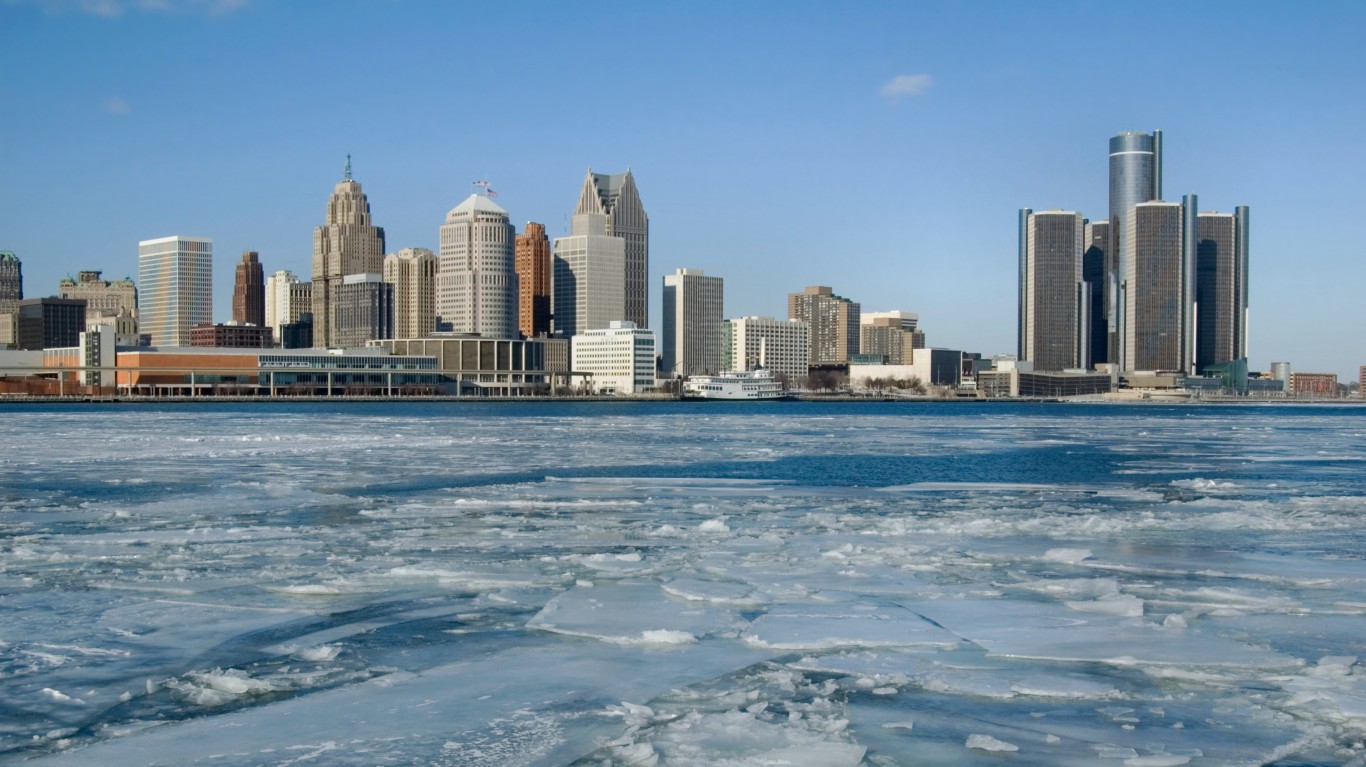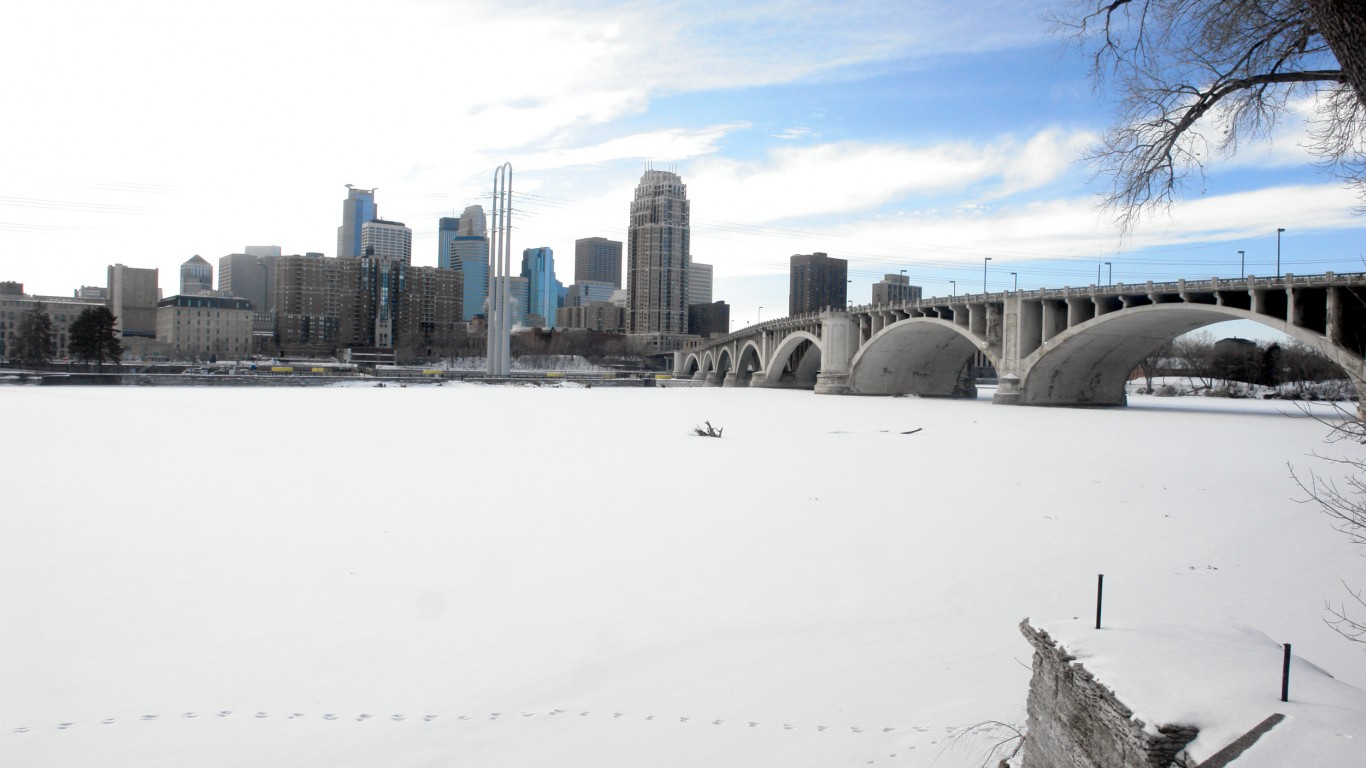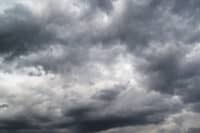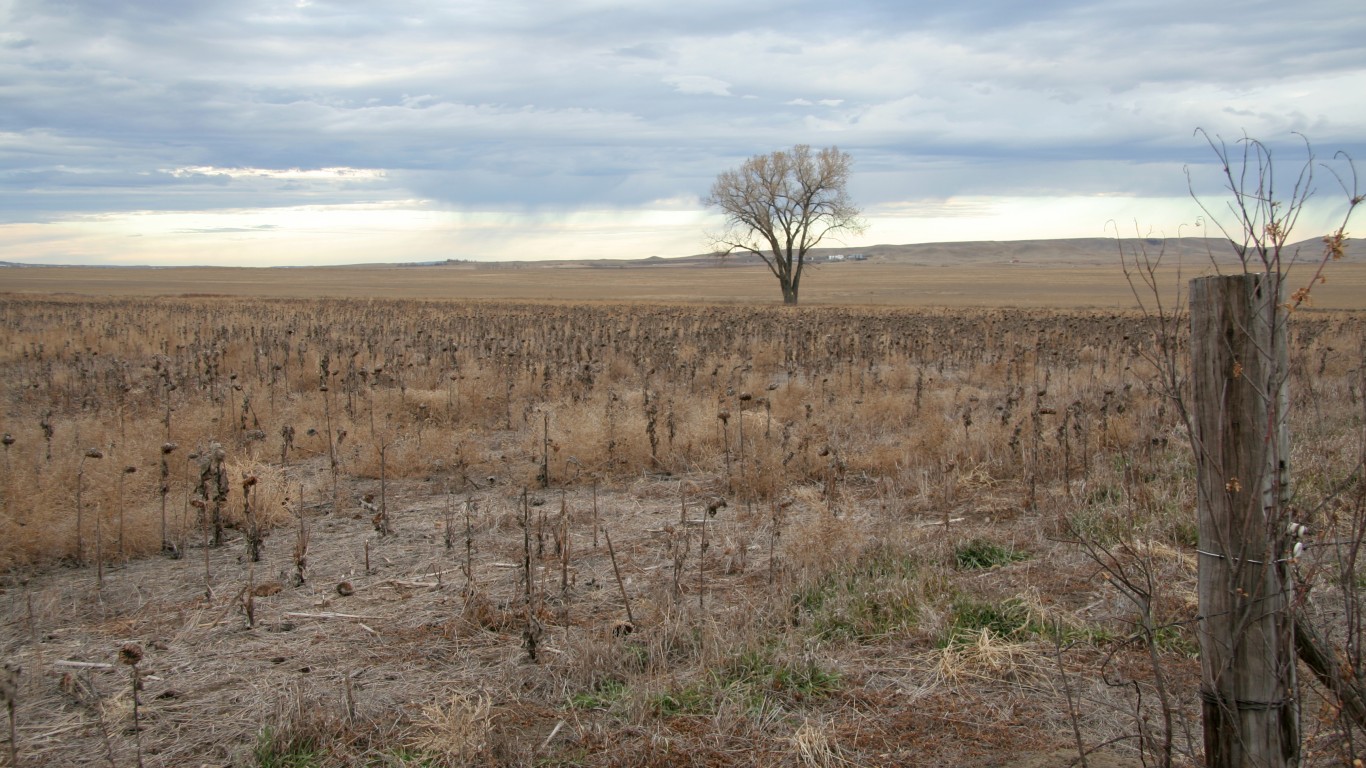
As Hurricane Ian lashes the west coast of Florida with drenching rains, it is easy to forget that many states have the opposite problem – nowhere near enough rainfall. While torrential rain can cause flooding, too little rain can cause a drought. (These are the most powerful hurricanes of all time.)
The National Weather Service describes drought as a prolonged period of usually dry weather, causing water shortages and/or crop damage. But unlike other natural disasters such as floods and hurricanes, droughts are harder to define as a natural disaster, points out the U.S. Geological Service. Droughts, the agency notes, are more subjective because they “do not have the immediate effects of floods, but sustained droughts can cause economic stress throughout an area.” See the deadliest billion-dollar natural disasters in U.S. history.
Plus, average yearly rainfall naturally varies across the U.S. In the southwestern deserts, average precipitation is less than 3 inches a year, while in Atlanta it is about 50 inches, according to USGS.
To identify the states with the worst drought, 24/7 Wall St. reviewed drought data for the most recent week (Sept. 23) from the U.S. Drought Monitor, a joint program between the National Drought Mitigation Center at the University of Nebraska-Lincoln, the National Oceanic and Atmospheric Administration, and the U.S. Department of Agriculture. The 18 states currently dealing with drought were ranked by their percentage of land area in extreme or exceptional drought.
The driest county in each state is the county where the largest portion of land is in extreme or exceptional drought. We also added the percentage of the state population living in areas with extreme or exceptional drought, all from the report. Total population comes from the American Community Survey 2020 five-year estimates.
On this list, Kansas is the driest state. More than 70% of its land area is deemed drought-stricken. More than 1.1 million people live in those drought areas. Oklahoma and Utah come in at No. 2 and No. 3, respectively.
No. 4 shouldn’t come as much of a surprise, considering the wildfires that have hit the state in recent years. Nearly 58% of California is classified as being in extreme or exceptional drought conditions. That leaves more than 11 million people – the most in the U.S. – on rain-parched lands.
Click here to see 18 states with the worst drought right now.

18. Iowa
> Land area in extreme or exceptional drought: 2.2%
> County with worst level of drought: Plymouth County – 87.9% in extreme or exceptional drought
> Population living in extreme or exceptional drought: 44,842 — 16th highest
> Total population, 2021: 3,193,079 — 9th highest
[in-text-ad]
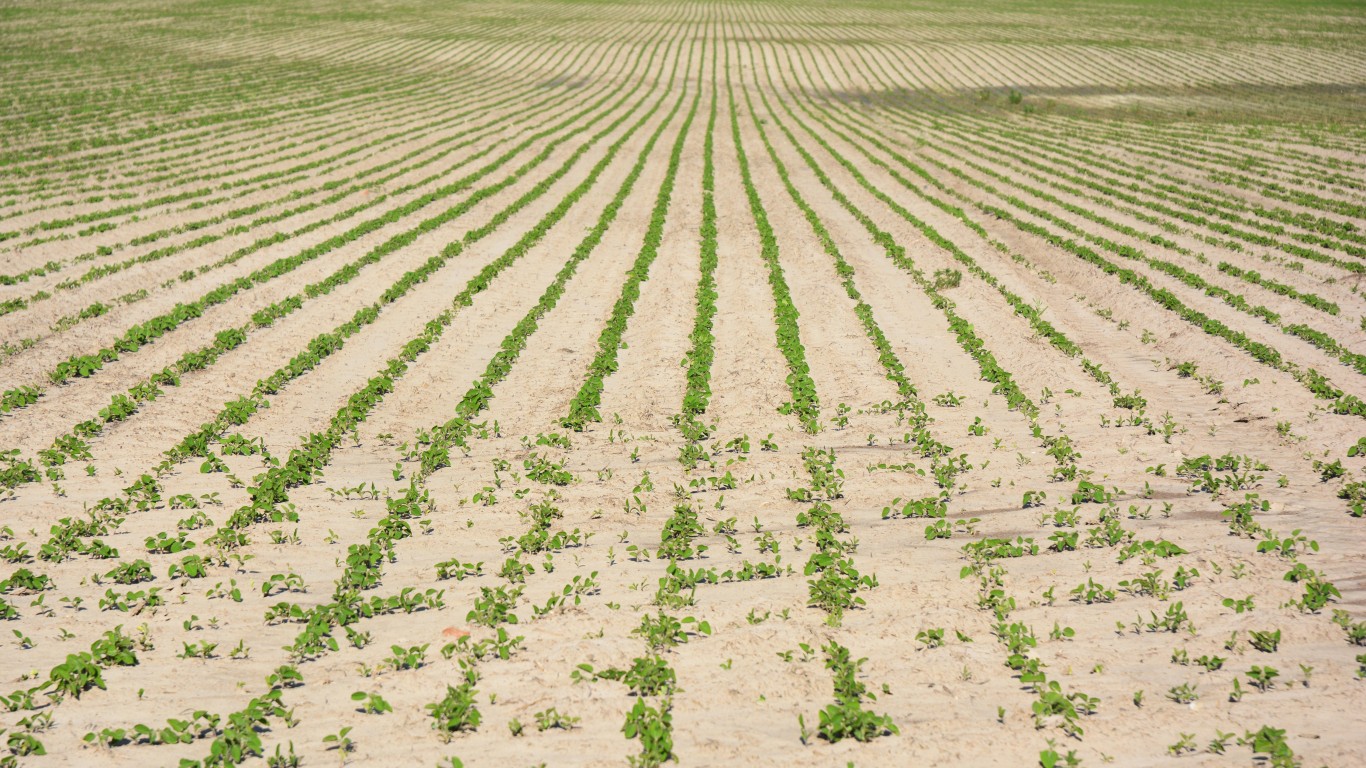
17. Missouri
> Land area in extreme or exceptional drought: 2.7%
> County with worst level of drought: Barton County – 100.0% in extreme or exceptional drought
> Population living in extreme or exceptional drought: 146,915 — 10th highest
> Total population, 2021: 6,168,187 — 4th highest
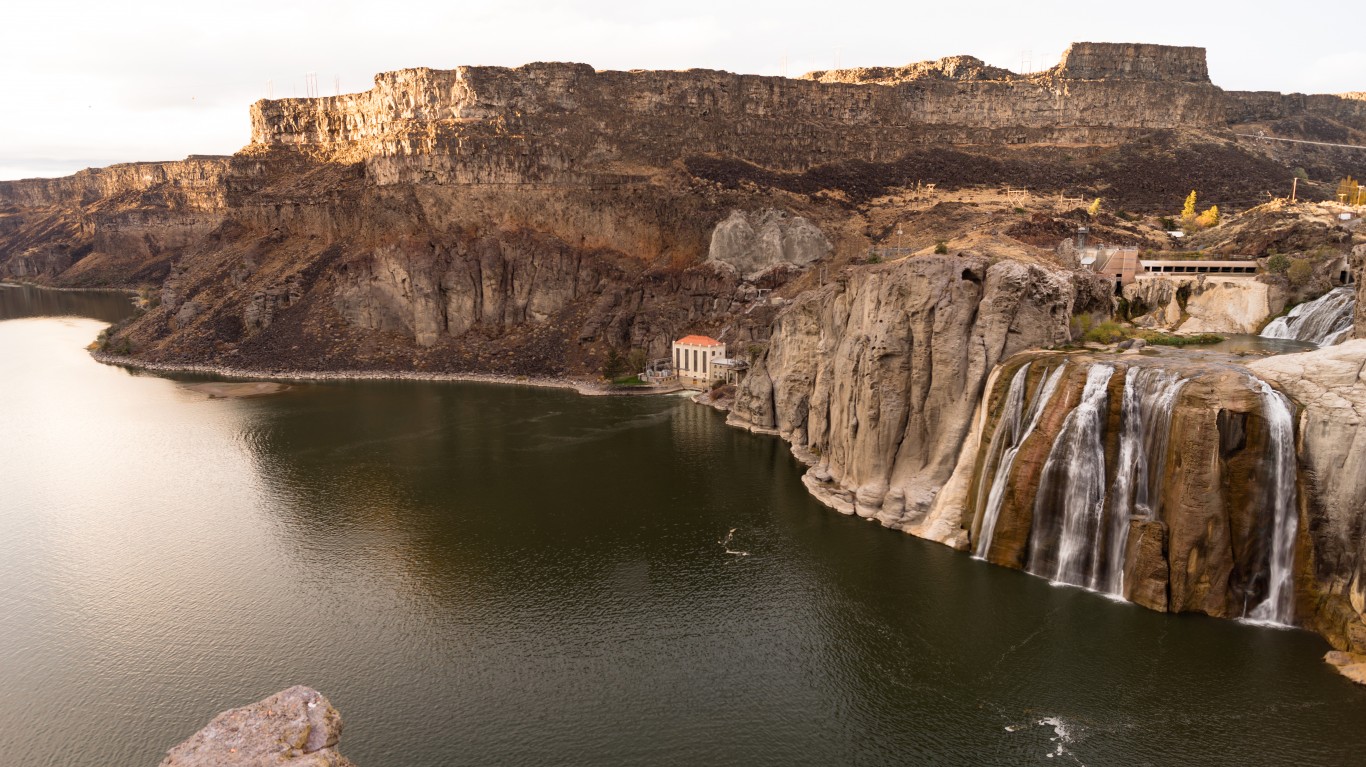
16. Idaho
> Land area in extreme or exceptional drought: 3.1%
> County with worst level of drought: Franklin County – 89.5% in extreme or exceptional drought
> Population living in extreme or exceptional drought: 66,573 — 14th highest
> Total population, 2021: 1,900,923 — 14th highest

15. Montana
> Land area in extreme or exceptional drought: 3.6%
> County with worst level of drought: Teton County – 84.3% in extreme or exceptional drought
> Population living in extreme or exceptional drought: 31,044 — 18th highest
> Total population, 2021: 1,104,271 — 16th highest
[in-text-ad-2]
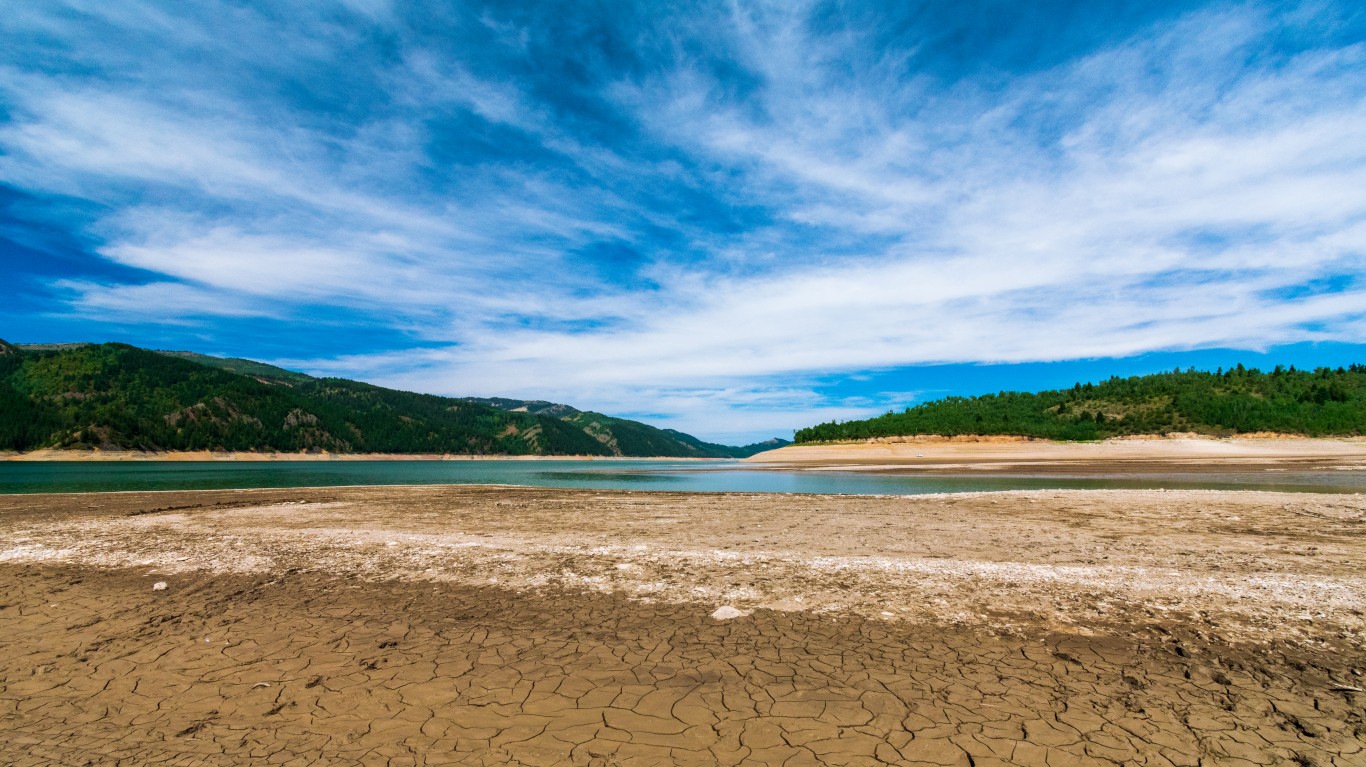
14. Wyoming
> Land area in extreme or exceptional drought: 3.7%
> County with worst level of drought: Laramie County – 63.4% in extreme or exceptional drought
> Population living in extreme or exceptional drought: 67,597 — 12th highest
> Total population, 2021: 578,803 — 18th highest
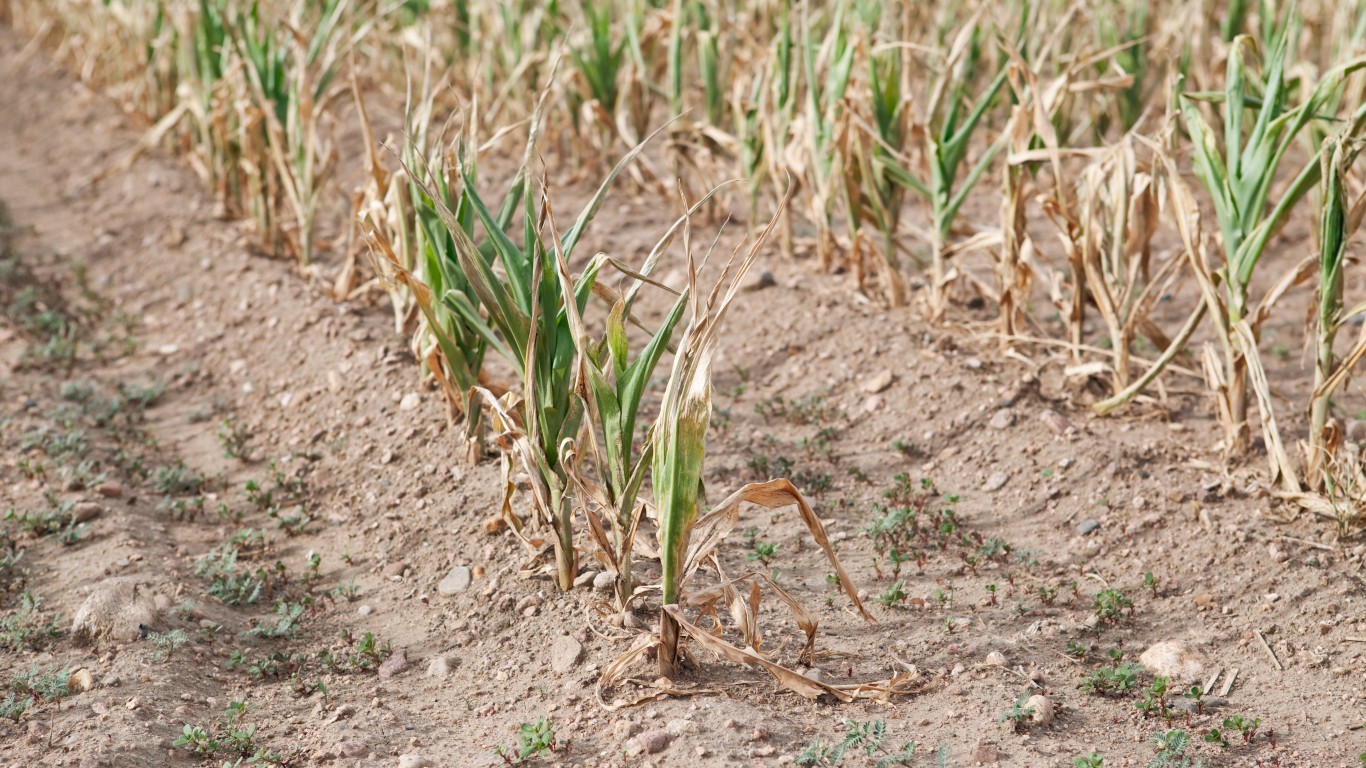
13. Colorado
> Land area in extreme or exceptional drought: 4.5%
> County with worst level of drought: Phillips County – 100.0% in extreme or exceptional drought
> Population living in extreme or exceptional drought: 67,432 — 13th highest
> Total population, 2021: 5,812,069 — 5th highest
[in-text-ad]
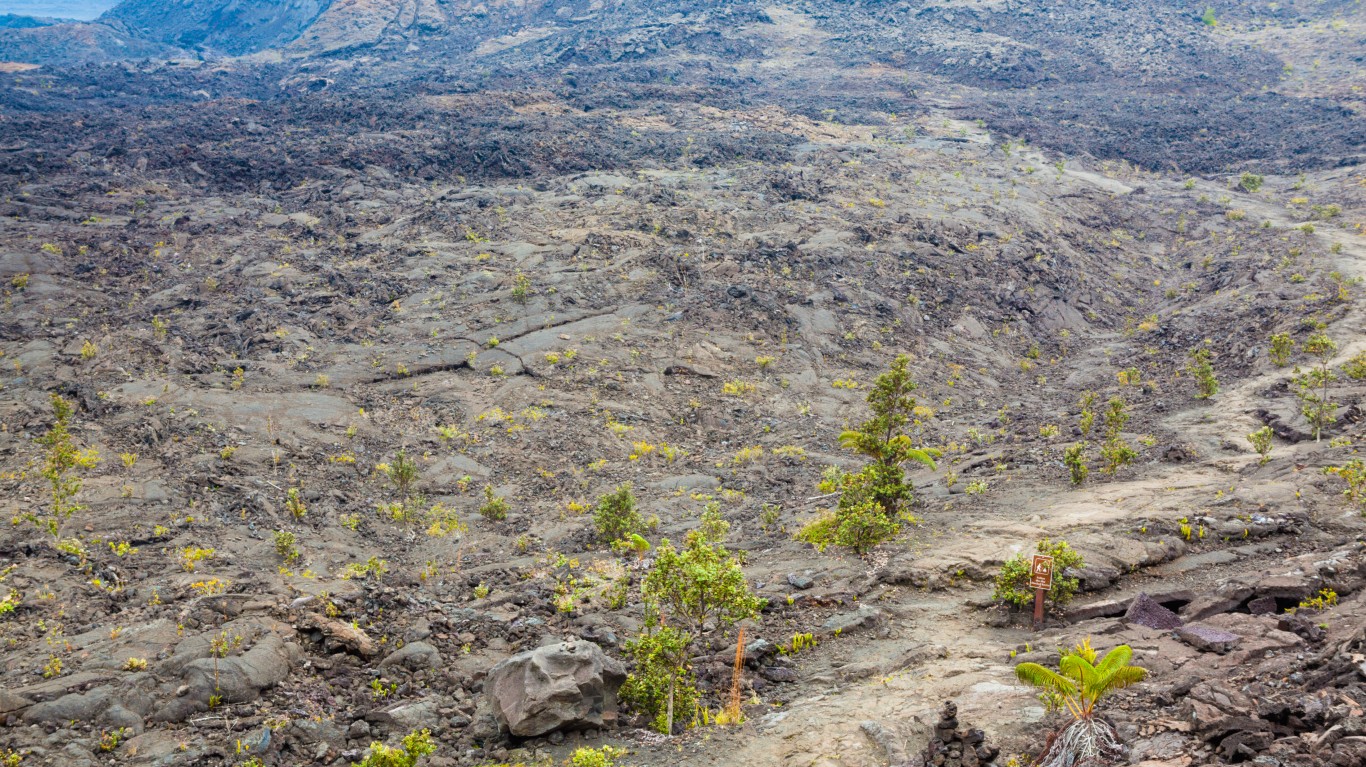
12. Hawaii
> Land area in extreme or exceptional drought: 5.1%
> County with worst level of drought: Maui County – 22.9% in extreme or exceptional drought
> Population living in extreme or exceptional drought: 38,873 — 17th highest
> Total population, 2021: 1,441,553 — 15th highest

11. South Dakota
> Land area in extreme or exceptional drought: 5.6%
> County with worst level of drought: Clay County – 100.0% in extreme or exceptional drought
> Population living in extreme or exceptional drought: 68,012 — 11th highest
> Total population, 2021: 895,376 — 17th highest
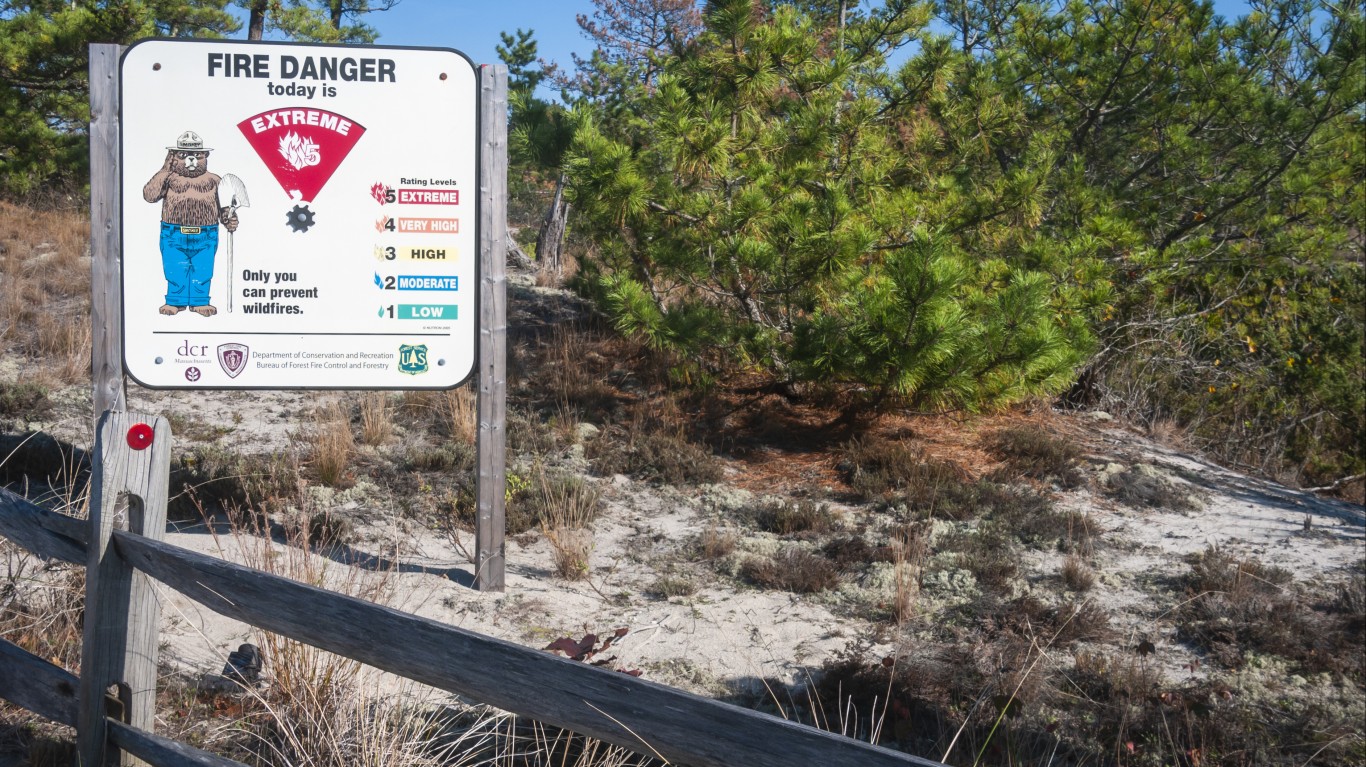
10. Massachusetts
> Land area in extreme or exceptional drought: 6.8%
> County with worst level of drought: Suffolk County – 100.0% in extreme or exceptional drought
> Population living in extreme or exceptional drought: 1,461,604 — 5th highest
> Total population, 2021: 6,984,723 — 3rd highest
[in-text-ad-2]
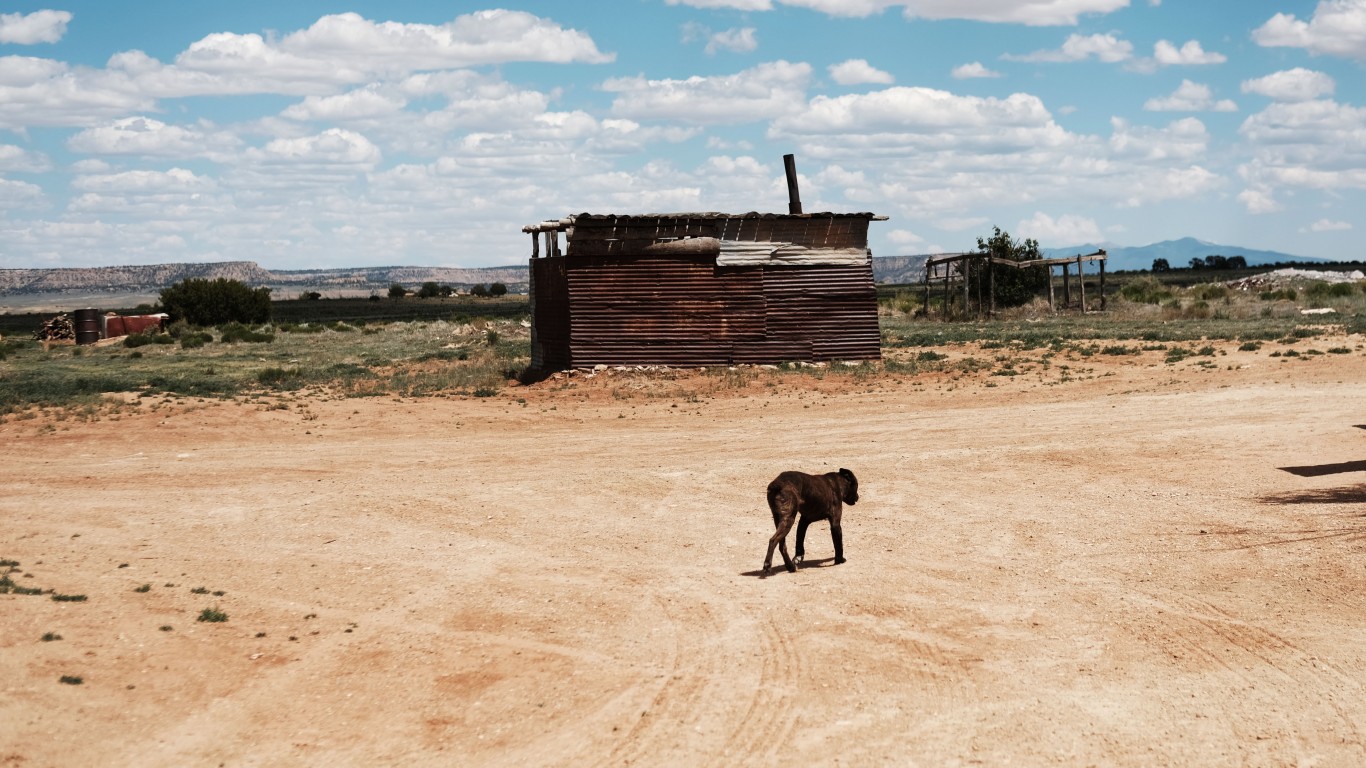
9. New Mexico
> Land area in extreme or exceptional drought: 7.0%
> County with worst level of drought: Lea County – 65.0% in extreme or exceptional drought
> Population living in extreme or exceptional drought: 61,136 — 15th highest
> Total population, 2021: 2,115,877 — 12th highest
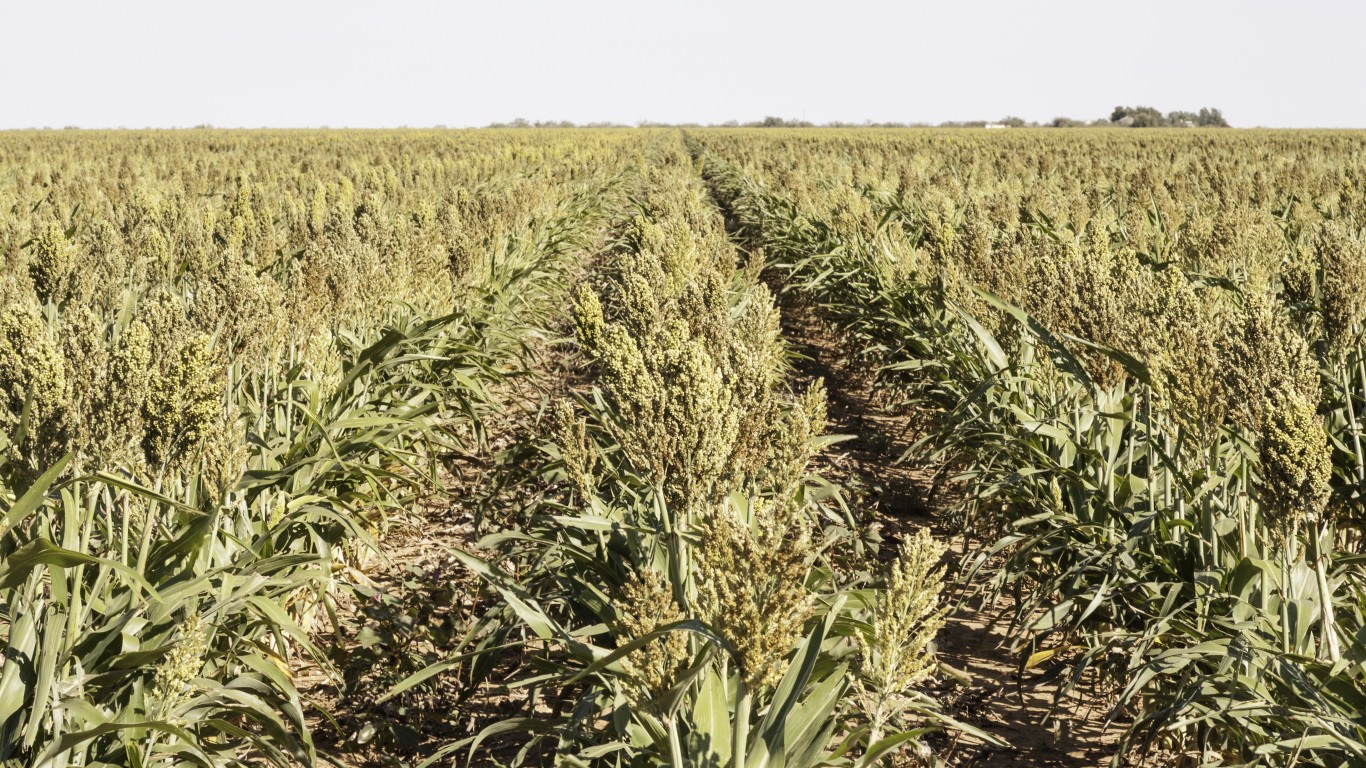
8. Texas
> Land area in extreme or exceptional drought: 9.0%
> County with worst level of drought: Bexar County – 100.0% in extreme or exceptional drought
> Population living in extreme or exceptional drought: 2,701,997 — 2nd highest
> Total population, 2021: 29,527,941 — 2nd highest
[in-text-ad]

7. Oregon
> Land area in extreme or exceptional drought: 32.1%
> County with worst level of drought: Crook County – 100.0% in extreme or exceptional drought
> Population living in extreme or exceptional drought: 259,549 — 8th highest
> Total population, 2021: 4,246,155 — 6th highest
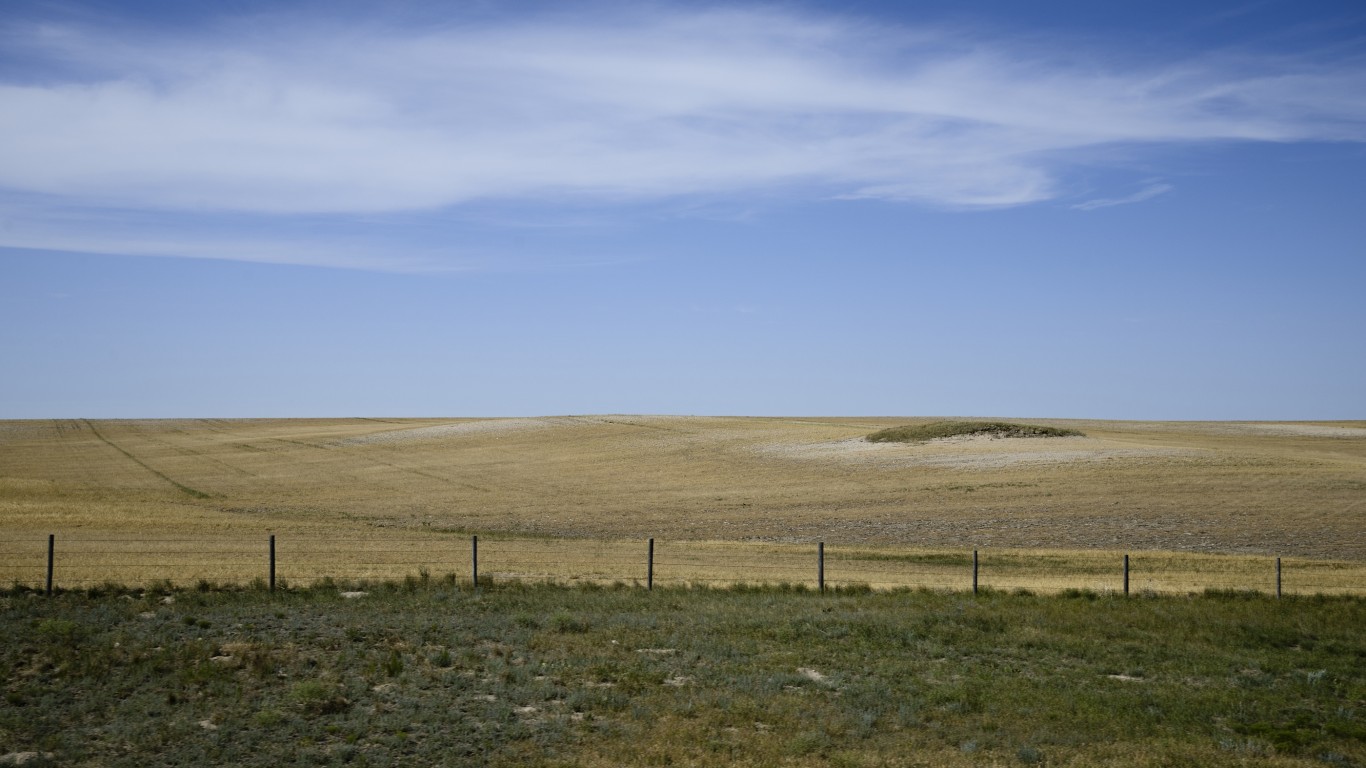
6. Nebraska
> Land area in extreme or exceptional drought: 40.9%
> County with worst level of drought: Cedar County – 100.0% in extreme or exceptional drought
> Population living in extreme or exceptional drought: 229,843 — 9th highest
> Total population, 2021: 1,963,692 — 13th highest
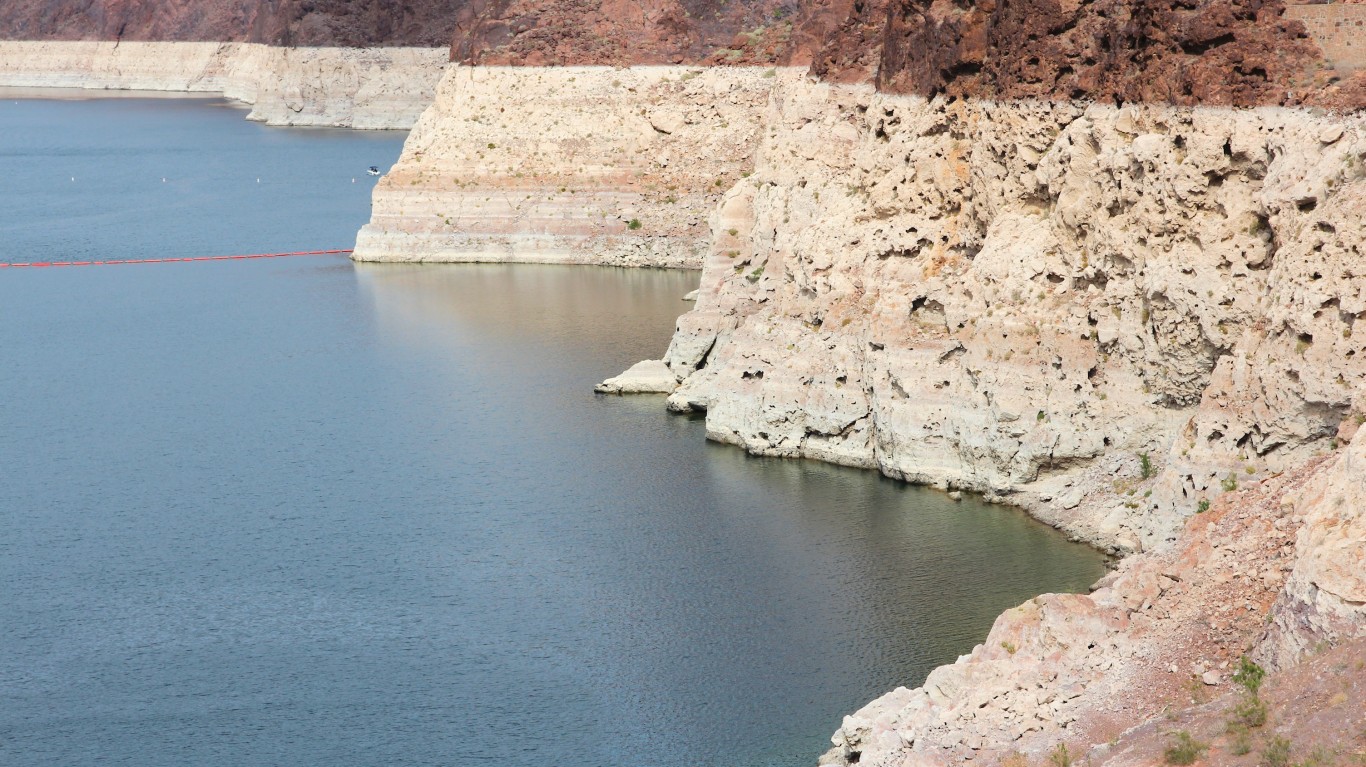
5. Nevada
> Land area in extreme or exceptional drought: 45.9%
> County with worst level of drought: Nye County – 82.9% in extreme or exceptional drought
> Population living in extreme or exceptional drought: 423,649 — 7th highest
> Total population, 2021: 3,143,991 — 10th highest
[in-text-ad-2]
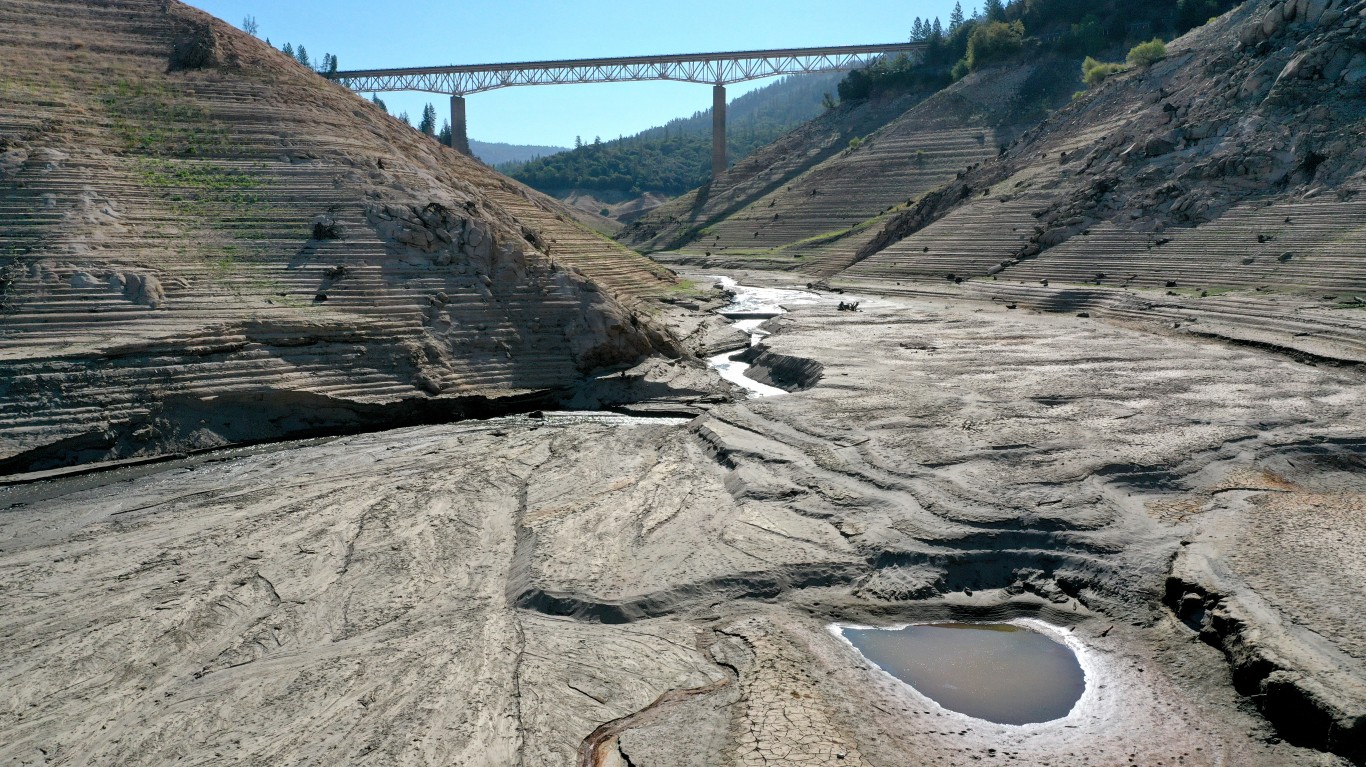
4. California
> Land area in extreme or exceptional drought: 57.5%
> County with worst level of drought: Kings County – 100.0% in extreme or exceptional drought
> Population living in extreme or exceptional drought: 11,587,503 — the highest
> Total population, 2021: 39,237,836 — the highest
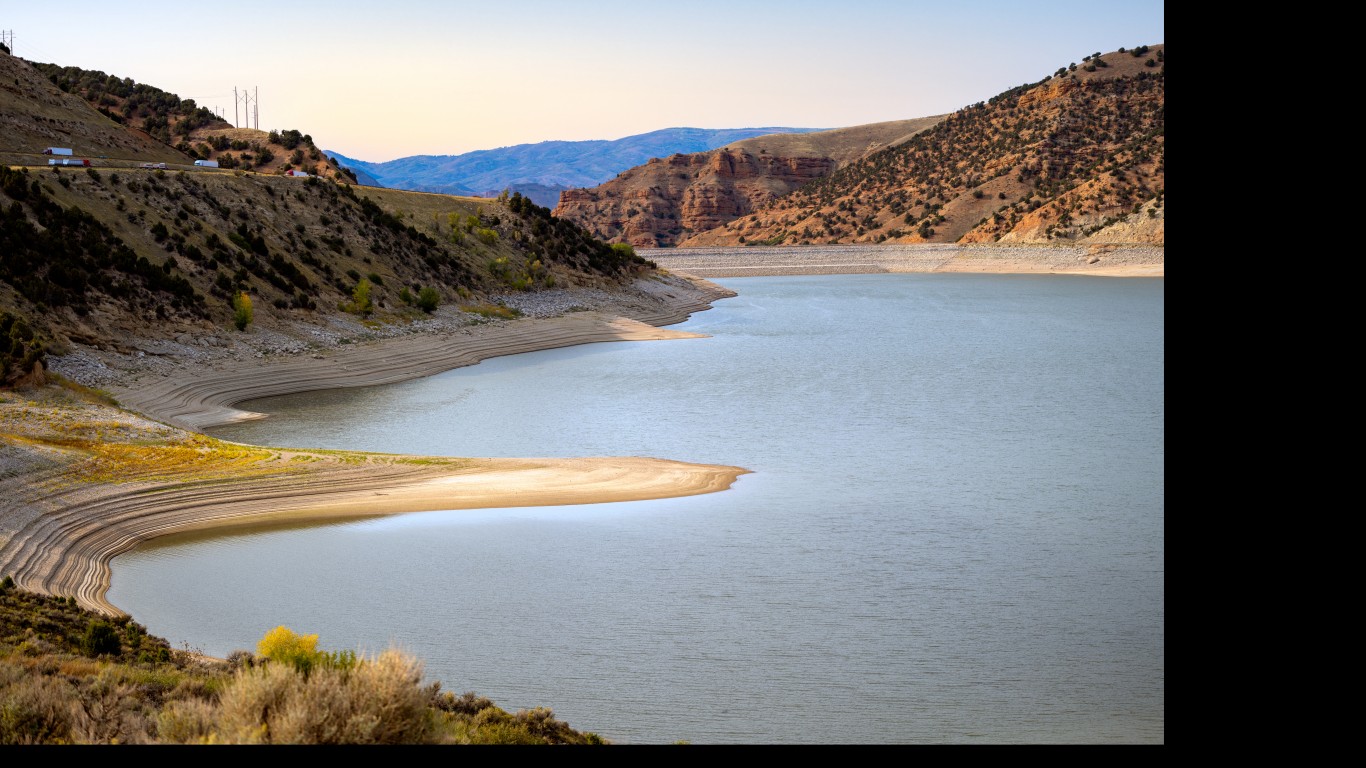
3. Utah
> Land area in extreme or exceptional drought: 60.3%
> County with worst level of drought: Emery County – 100.0% in extreme or exceptional drought
> Population living in extreme or exceptional drought: 1,915,126 — 3rd highest
> Total population, 2021: 3,337,975 — 8th highest
[in-text-ad]
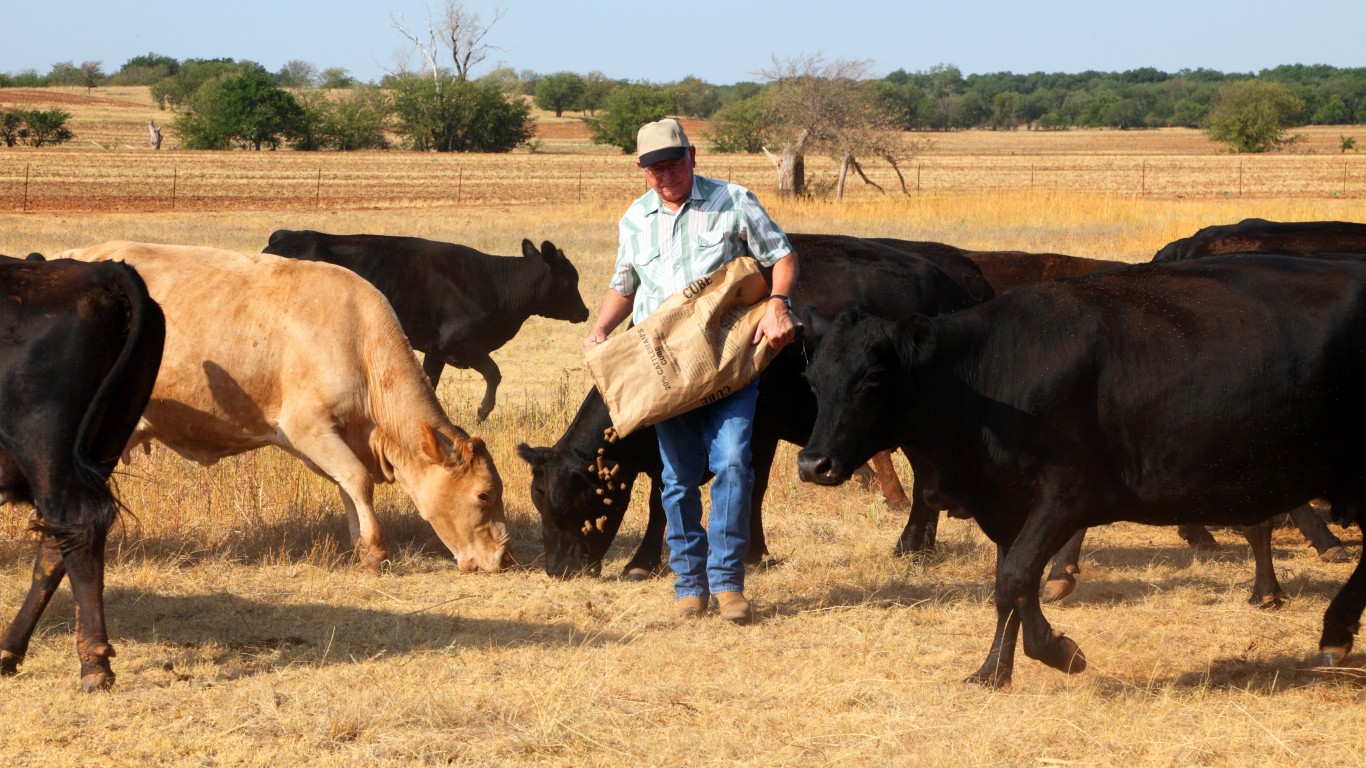
2. Oklahoma
> Land area in extreme or exceptional drought: 67.6%
> County with worst level of drought: Atoka County – 100.0% in extreme or exceptional drought
> Population living in extreme or exceptional drought: 1,551,675 — 4th highest
> Total population, 2021: 3,986,639 — 7th highest

1. Kansas
> Land area in extreme or exceptional drought: 72.5%
> County with worst level of drought: Barber County – 100.0% in extreme or exceptional drought
> Population living in extreme or exceptional drought: 1,124,274 — 6th highest
> Total population, 2021: 2,934,582 — 11th highest
Get Ready To Retire (Sponsored)
Start by taking a quick retirement quiz from SmartAsset that will match you with up to 3 financial advisors that serve your area and beyond in 5 minutes, or less.
Each advisor has been vetted by SmartAsset and is held to a fiduciary standard to act in your best interests.
Here’s how it works:
1. Answer SmartAsset advisor match quiz
2. Review your pre-screened matches at your leisure. Check out the advisors’ profiles.
3. Speak with advisors at no cost to you. Have an introductory call on the phone or introduction in person and choose whom to work with in the future
Thank you for reading! Have some feedback for us?
Contact the 24/7 Wall St. editorial team.
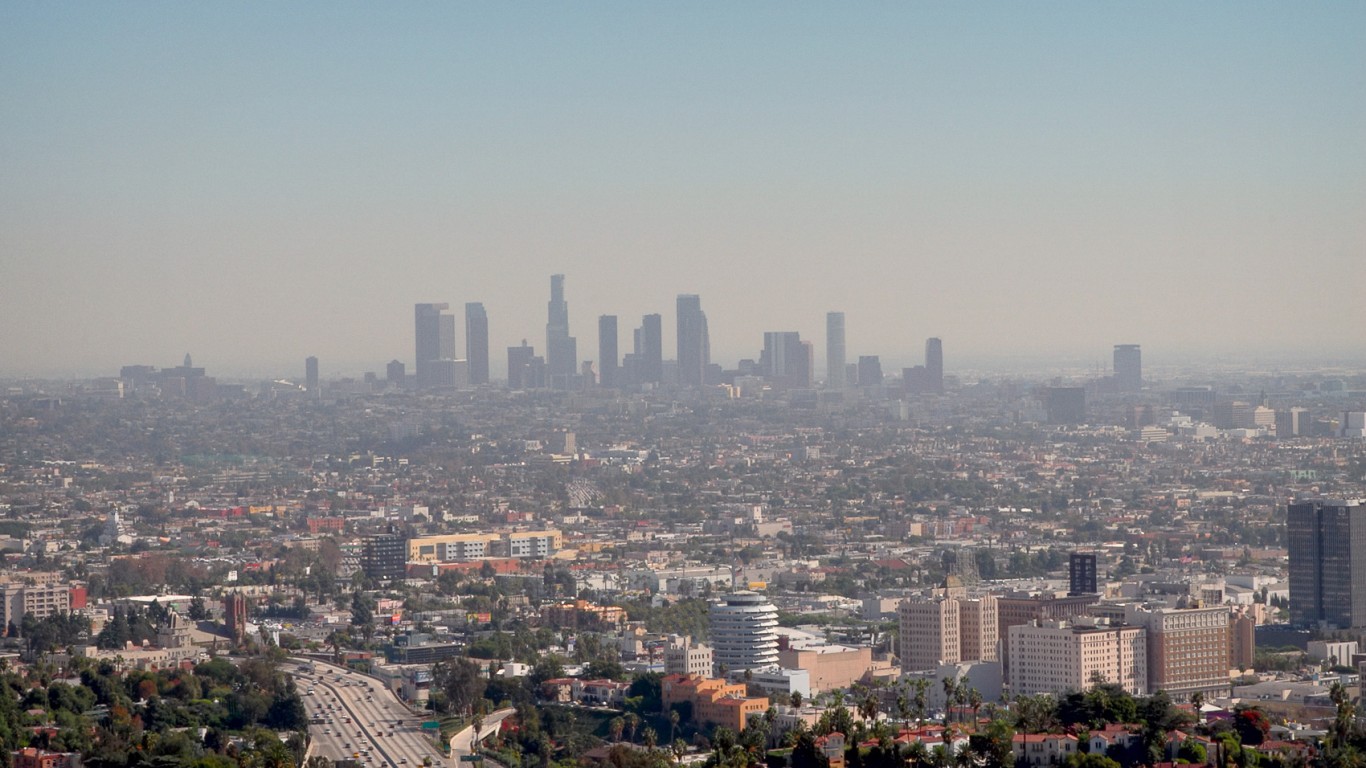 24/7 Wall St.
24/7 Wall St.